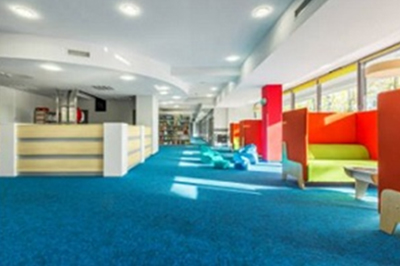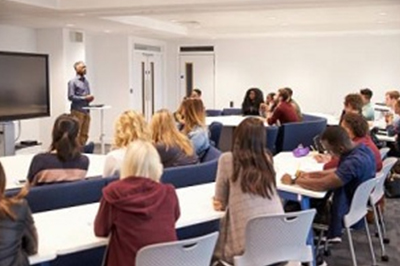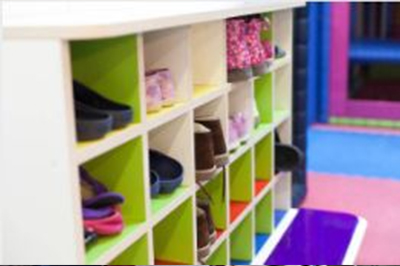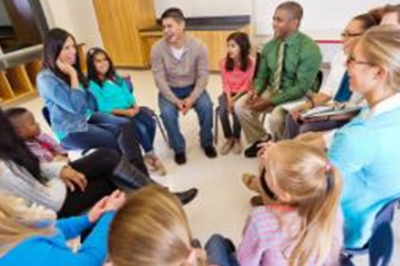Space Configuration
Space Configuration
Interior Color
The color of an interior wall, floor, and furniture in a room.
Personal and Social Spaces (PSS)
Amount of space allowed to each student seated.
From the supporting literature (linked above),
1. crowding has an impact on privacy, personal space and individual’s behavior.
2. Providing enough space for social density should be emphasized.
3. There is an association between personal spaces and student behavior and sex differences.
4. The literature also explained that providing a social space that supports students and teachers connectivity makes community value and support education.
5. The literature discusses that there is a relationship between school facility design (personal space as an example) and students’ achievements.
Storage
secured individual space for student belongings/ secured space for media, tools, supplies and teachers belongings.
Size of the Classroom (SC)
Total area of the room.
From the supporting literature (linked above),
1. There is a relationship between school overcrowding and student performance.
2. School overcrowding (high density) affects student learning and performance and their thermal, visual and acoustic comfort.
3. High density environment also influences child to become more stressed and show some behaviors that were not leading to social withdrawal.
4. Schools with smaller classroom have higher rate of enrollment compare to schools with bigger classrooms with overcrowding.
5. There is a relationship between school facility design (higher ceilings as an example) and classroom size and students’ achievements.
6. Some parts of the literature are not consistent with previous findings. Some studies discuss that students who are in smaller classroom have better academic outcome with fewer classroom disruption.
Interior Material Long Term Usability (LTU)
Lifecycle and usability of materials.
Functional Space (FS)
Studying, communicating, and visiting spaces designed for students, teachers, and visitors.
References
1. Aiello, J. R., & Aiello, T. D. C. (1974). The development of personal space: Proxemic behavior of children 6 through 16. Human ecology, 2(3), 177-189.
2. Aiello, J. R., Thompson, D. E., & Baum, A. (1985). Children, crowding, and control: Effects of environmental stress on social behavior. Habitats for children: The impacts of density, 97-124.
3. Biddle, B. J., & Berliner, D. C. (2008). Small class size and its effects. Schools and society: A sociological approach to education, 3, 86-95.
4. Blackmore, J., Bateman, D., Loughlin, J., O’Mara, J., & Aranda, G. (2011). Research into the connection between built learning spaces and student outcomes.
5. Blum, R. (2007). Best practices: building blocks for enhancing school environment. Baltimore, MD: Johns Hopkins Bloomberg School of Public Health.
6. Boots, B. N., & Ahonen, J. (1978). Urban Crowding and Its Consequences.
7. Bowers, A. J; Urick, A (2011). “Does High School Facility Quality Affect Student Achievement? A Two-Level Hierarchical Linear Model”. Journal of Education Finance, 37)1), 72 – 94.
8. Dobbs, E. V. (1935). Overcrowding the Primary School. Childhood Education, 11(4), 159-159.
9. Earthman, G. I., & Lemasters, L. K. (1997). Can Research Findings Help School Systems Obtain the Most Bang from the Construction Bucks?.
10. Fisher, Kenn (2000). “Building Better Outcomes: The Impact of School Infrastructure on Student Outcomes and Behaviour”. Department of Education, Training and Youth Affairs, Australia.
11. Finn, J. D., & Achilles, C. M. (1999). Tennessee’s class size study: Findings, implications, misconceptions. Educational evaluation and policy analysis, 21(2), 97-109.
12. Finn, J. D., Pannozzo, G. M., & Achilles, C. M. (2003). The “why’s” of class size: Student behavior in small classes. Review of Educational Research, 73(3), 321-368.
13. Fuller, B., Dauter, L., Hosek, A., Kirschenbaum, G., McKoy, D., Rigby, J., & Vincent, J. M. (2009). Building schools, rethinking quality? Early lessons from Los Angeles. Journal of Educational Administration, 47(3), 336-349.
14. Lewis, L., Snow, K., Farris, E., Smerdon, B., Cronen, S., & Kaplan, J. (2000). Condition of America’s Public School Facilities, 1999. Statistical Analysis Report.
15. McGuffey, C. W. (1982). “Facilities.” Improving Educational Standards and Productivity: The Research Basis for Policy, H. J. Walberg, ed., McCutchan, Berkeley, CA, 237-288.
16. Mosteller, F. (1995). The Tennessee study of class size in the early school grades. The future of children, 113-127.
17. Namazian, P. A., & Mehdipour, A. (2013). Psychological Demands of the Built Environment, Privacy, Personal Space and Territory in Architecture. International Journal of Psychology and Behavioral Sciences, 3(4), 109-113.
18. Schneider, M. (2002). Do School Facilities Affect Academic Outcomes? (ERIC Number: ED470979). http://www.edfacilities.org/pubs/ (Sept. 12 2016): U.S. Department of Education.
19. Tanner, C. K. (2008). Explaining relationships among student outcomes and the school’s physical environment. Journal of Advanced Academics, 19(3), 444-471.
20. Weinstein, C. S. (1979). The physical environment of the school: A review of the research. Review of educational Research, 49(4), 577-610.








